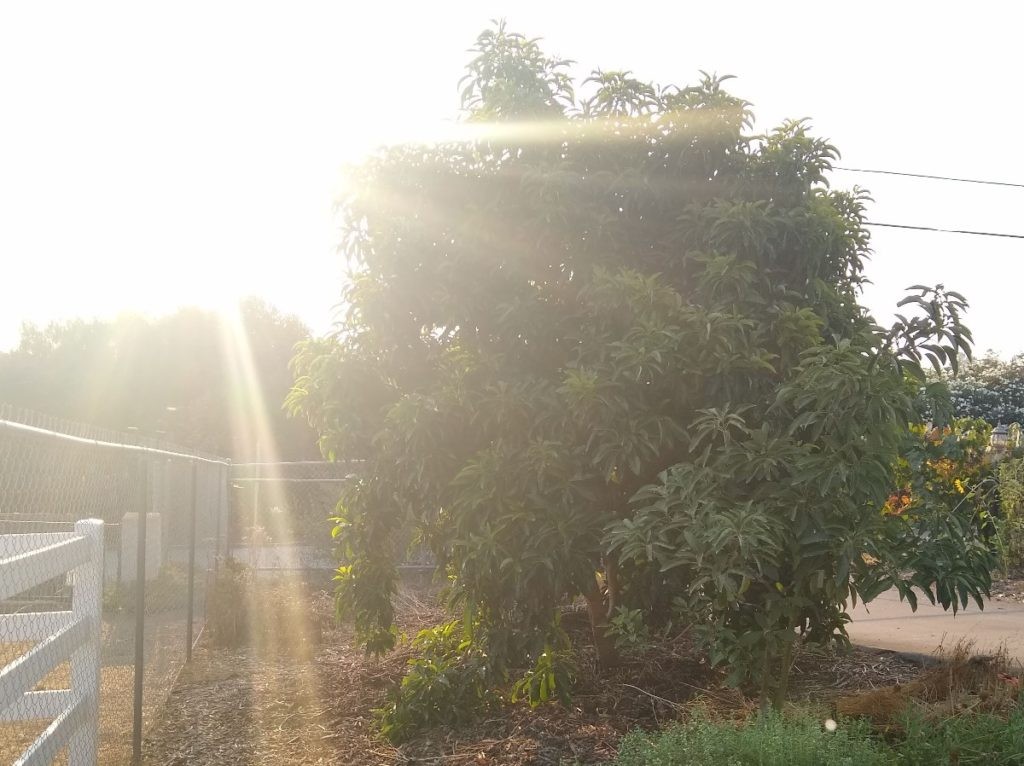Avocado trees are a rewarding addition to any garden, offering delicious fruit and attractive foliage. While you can purchase young avocado trees, grafting is a popular method to propagate specific varieties or improve existing trees. This guide covers everything you need to know about how to graft avocado trees, ensuring your gardening efforts yield the best results.
Why Graft Avocado Trees?
Grafting involves joining parts from two different plants to grow as one. In the case of avocado trees, this typically means attaching a scion (a cutting from a desired avocado variety) to a rootstock (the base of another avocado tree). There are several advantages to grafting:
- Reproducing Specific Varieties: Grafting allows you to clone a specific avocado variety, ensuring you get the exact fruit you desire.
- Improving Tree Characteristics: Rootstocks can be selected for disease resistance, cold hardiness, or other desirable traits, improving the overall health and resilience of the grafted tree.
- Faster Fruiting: Grafted avocado trees often produce fruit sooner than those grown from seed.
- Cost-Effective: Grafting can be a more economical way to obtain specific avocado varieties compared to purchasing mature trees.
Understanding Avocado Grafting Techniques
Several grafting techniques can be used for avocado trees. Here are a few common methods:
- Cleft Grafting: This method involves making a split (cleft) in the rootstock and inserting a wedge-shaped scion. It’s best performed in early spring when the rootstock is actively growing.
- Whip Grafting: This technique involves making matching diagonal cuts on both the scion and rootstock, then joining them together. Whip grafting is suitable for smaller rootstocks and scions with similar diameters.
- Side Veneer Grafting: This method involves removing a thin sliver of bark and wood from the side of the rootstock and attaching a scion with a matching cut. Side veneer grafting can be done at various times of the year, but it’s most successful during the active growing season.
- Chip Budding: This technique involves removing a chip of bark from the rootstock and replacing it with a bud from the desired scion. Chip budding is typically done in late summer or early fall.
Step-by-Step Guide to Grafting Avocado Trees
Here’s a general guide to grafting avocado trees, focusing on cleft grafting:
-
Gather Your Materials:
- Sharp grafting knife or utility knife
- Rootstock (established avocado tree or seedling)
- Scion wood (cutting from a desired avocado variety)
- Grafting tape or budding rubber
- Grafting sealant or wax
- Rubbing alcohol (for sanitizing tools)
-
Prepare the Rootstock:
- Select a healthy rootstock with a diameter of about 1/2 to 1 inch.
- Cut the rootstock off at a point where it is straight and free of knots or deformities.
- Use a sharp knife to make a vertical split (cleft) down the center of the rootstock, about 2 to 3 inches deep.
-
Prepare the Scion:
- Choose scion wood that is healthy, disease-free, and about the same diameter as the rootstock.
- Cut the scion into a wedge shape, with the two cuts tapering to a point. The wedge should be about 2 to 3 inches long.
-
Insert the Scion:
- Carefully insert the wedge-shaped scion into the cleft of the rootstock.
- Make sure the cambium layers (the green layer just under the bark) of the scion and rootstock are in contact. This is crucial for successful grafting.
- If the scion is narrower than the rootstock, align the cambium layers on one side.
-
Secure the Graft:
- Wrap the graft union tightly with grafting tape or budding rubber, starting from the bottom and working your way up.
- This will hold the scion in place and protect the graft from drying out.
-
Seal the Graft:
- Apply grafting sealant or wax to all exposed cut surfaces, including the top of the rootstock and the tip of the scion.
- This will prevent infection and further protect the graft from drying out.
-
Provide Aftercare:
- Place the grafted tree in a sheltered location with indirect sunlight.
- Keep the soil moist but not waterlogged.
- After a few weeks, check for signs of growth, such as new leaves emerging from the scion.
- Once the scion starts growing vigorously, gradually expose the tree to more sunlight.
- Remove any suckers that grow from the rootstock below the graft union.
Tips for Successful Avocado Grafting
- Use Sharp, Clean Tools: Sanitize your tools with rubbing alcohol before each graft to prevent the spread of disease.
- Match Cambium Layers: Proper alignment of the cambium layers is essential for the scion and rootstock to fuse together.
- Wrap Tightly: Ensure the graft union is wrapped tightly to provide support and prevent drying out.
- Protect from Sun and Wind: Shield the newly grafted tree from direct sunlight and strong winds.
- Be Patient: It can take several weeks or even months for the graft to take. Don’t be discouraged if you don’t see results immediately.
 Seven-year-old Reed and Lamb avocado trees, planted 11 feet from a fence, demonstrate healthy growth and ample space for walking.
Seven-year-old Reed and Lamb avocado trees, planted 11 feet from a fence, demonstrate healthy growth and ample space for walking.
Choosing the Right Rootstock and Scion
The success of your avocado graft depends on selecting compatible rootstock and scion varieties. Here are some factors to consider:
- Rootstock: Choose a rootstock that is well-adapted to your local climate and soil conditions. Look for varieties that are known for disease resistance and vigor. Common avocado rootstocks include Duke 7, Topa Topa, and Mexican seedlings.
- Scion: Select a scion variety that produces the type of avocado fruit you desire. Consider factors such as fruit size, flavor, and ripening season.
Dealing with Grafting Challenges
Even with careful planning and execution, grafting can sometimes fail. Here are some common challenges and how to address them:
- Graft Rejection: Sometimes, the scion and rootstock are incompatible, and the graft fails to take. This can be due to genetic differences or disease. Try grafting a different scion variety onto the same rootstock, or vice versa.
- Infection: If the graft union is not properly sealed, it can become infected with bacteria or fungi. To prevent infection, use clean tools and apply grafting sealant to all exposed cut surfaces.
- Drying Out: If the graft union dries out, the scion will not be able to fuse with the rootstock. To prevent drying out, wrap the graft union tightly with grafting tape and provide adequate moisture.
- Pest and Disease: Protect the newly grafted tree from pests and diseases by monitoring it regularly and taking appropriate action if problems arise.
Beyond Grafting: Other Propagation Methods
While grafting is a popular method for propagating avocado trees, other techniques can also be used, including:
- Seed Propagation: Growing avocado trees from seed is possible, but it’s not recommended if you want to reproduce a specific variety. Seed-grown avocado trees can take many years to produce fruit, and the fruit may not be true to type.
- Air Layering: This method involves rooting a branch while it’s still attached to the parent tree. Air layering can be a good option for propagating difficult-to-root varieties.
Conclusion
Grafting avocado trees is a rewarding and cost-effective way to propagate specific varieties and improve tree characteristics. By following the steps outlined in this garden guide and taking the necessary precautions, you can increase your chances of successful grafting and enjoy a bountiful harvest of delicious avocados. Remember to prioritize sharp, clean tools, proper cambium alignment, and diligent aftercare. With patience and persistence, you’ll be well on your way to growing your own thriving avocado orchard.
